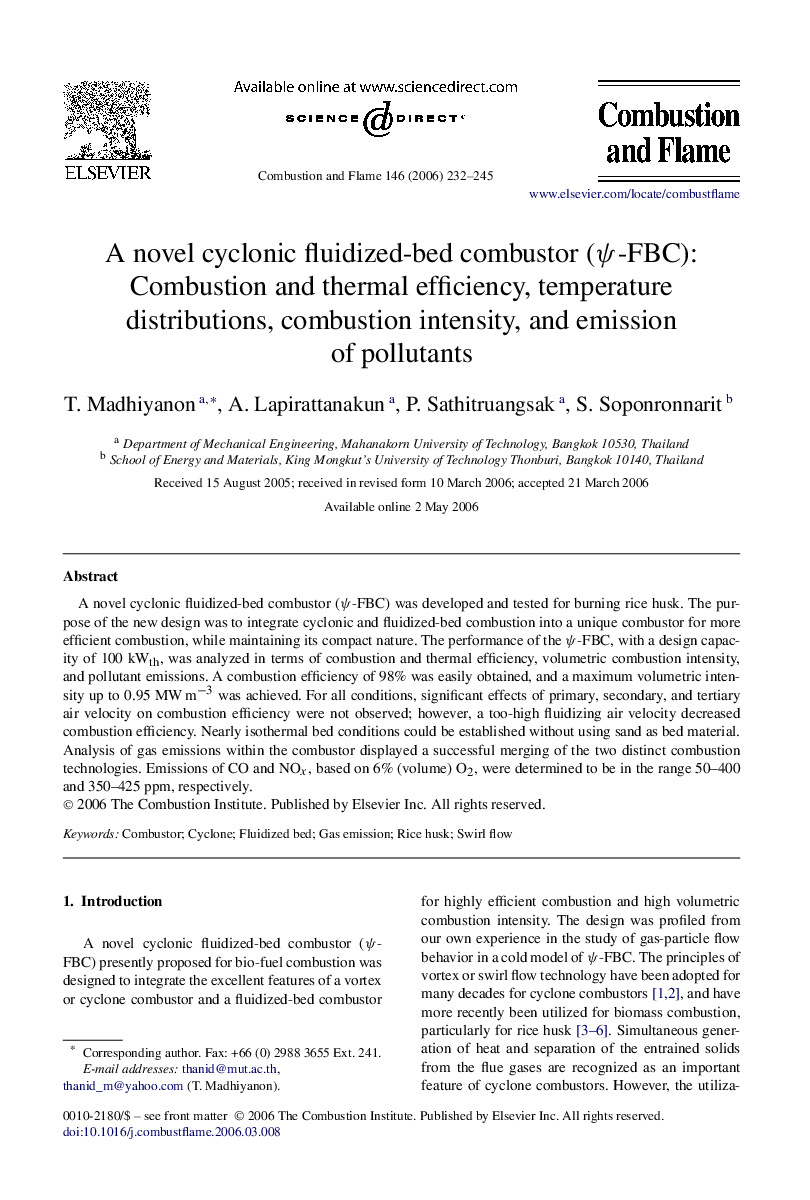| Article ID | Journal | Published Year | Pages | File Type |
|---|---|---|---|---|
| 169916 | Combustion and Flame | 2006 | 14 Pages |
A novel cyclonic fluidized-bed combustor (ψ-FBC) was developed and tested for burning rice husk. The purpose of the new design was to integrate cyclonic and fluidized-bed combustion into a unique combustor for more efficient combustion, while maintaining its compact nature. The performance of the ψ-FBC, with a design capacity of 100 kWth, was analyzed in terms of combustion and thermal efficiency, volumetric combustion intensity, and pollutant emissions. A combustion efficiency of 98% was easily obtained, and a maximum volumetric intensity up to 0.95 MW m−3 was achieved. For all conditions, significant effects of primary, secondary, and tertiary air velocity on combustion efficiency were not observed; however, a too-high fluidizing air velocity decreased combustion efficiency. Nearly isothermal bed conditions could be established without using sand as bed material. Analysis of gas emissions within the combustor displayed a successful merging of the two distinct combustion technologies. Emissions of CO and NOx, based on 6% (volume) O2, were determined to be in the range 50–400 and 350–425 ppm, respectively.
